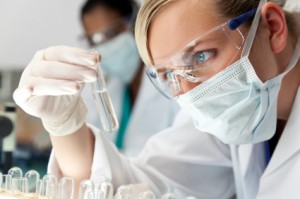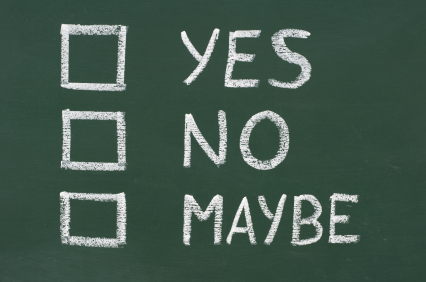From Tongue Depressors to Pacemakers – Patenting a Medical Device
Since its inception in 1790, the US Patent and Trademark Office (PTO) has issued over 8 million patents. A significant number of those were for medical devices. When you think of the term medical device, a number of things come to mind such as pacemakers, ventilators, and defibrillators. Each is a complex, advanced machine that required significant research and development and some level of skill to operate. It is easy to see the necessity and desire for patent protection.
You may be surprised to learn that many simple, ordinary devices such as tongue depressors, bedpans, and bandages are also patented medical devices. Also interesting are the patented devices that have little more than a tangential connection to medicine such as computer software.
The 5 Patent Requirements
First, almost anything can be patented. As stated by the U.S. Supreme Court, in a 1980 landmark case, “anything under the sun that is made by man,” can be patented. Patents are important to further research and development. Patents protect intellectual property, the expression of an idea, and give inventors exclusive rights to that property for a set period of time in exchange for public disclosure. The inventor has exclusive rights to the sale or manufacture, and profits thereof until the patent runs out, usually twenty years.
An idea in and of itself cannot be patented. For a patent, you need some type of embodiment of the idea, such as a description, illustration or prototype. In the case of the tongue depressor a simple description and drawing was all that was needed to file for a patent. While almost anything can be patented, there are a few requirements.
Lawmakers set out five basic requirements for patentability: patentable subject matter, utility, novelty, nonobviousness and enablement. Using the example of the bedpan, you can see how even a simple device can be patented.
Patentable subject matter is any process, machine, manufacture, or composition of matter or improvement to any of the preceding. A manufacture is an article or item made from raw materials such as, a hammer, glove, chair, hammer, etc. A bedpan is a manufacture.
Utility or usefulness. An invention must be useful to be patented. An invention must have a defined real world use. Although most people hope they never have to use one, a bedpan does have a real world use. They are used every day in hospitals throughout the world.
Novelty basically means the invention is new, innovative. It was not know or used by others. When the original patent was filed for the bedpan in 1837, it was a novel idea.
Nonobviousness is a bit harder to define. The PTO states, “subject matter sought to be patented and the prior art are such that the subject matter as a whole would have been nonobvious to a person having ordinary skill in the art at the time the invention was made.” The nonobvious requirement is much debated by patent attorneys and difficult to define. The reason for the requirement is more illustrative. Issuing patents for every single device that could easily occur to someone skilled in that field, hence obvious, further invention and research would be obstructed rather than stimulated. In the case of the bedpan, it was developed and filed before the nonobvious requirement was enacted. Even so, it is doubtful that a bedpan would have been viewed as obvious in 1837.
Enablement requires the inventor to provide a written description of how to make and use the invention in the patent application. This is basically an administrative task that is taken care of in the filling out of the patent application.
Does It Really Have To Be A Medical Device?
You can now see how simple ideas such as the tongue depressor or bedpan are patentable medical devices. Complexity is not a requirement. Nor is a direct connection to medicine. Computer software used in a medical office has been patented. It can be viewed as a medical device. Not to be confused, however, with the Food and Drug Administration’s (FDA) definition of a medical device. These are two separate regulatory bodies with differing purposes.
Why would computer software or improved mattresses be considered medical devices in the same category as pacemakers and defibrillators? Step back to the basic reason for obtaining a patent: money. Certainly there are other reasons and those who create for the betterment of society, to improve quality of life, or to further technology. However, if that were the only reason, a patent wouldn’t be necessary. Why not share the innovation freely, let everyone have a go at it. While popular in kindergarten, sharing is overrated. We are not talking about crayons, but often a life’s work and millions of dollars in research. 
If the investors and inventor want to make money from their creation, it will have to be marketed and sold in some form or another. “Patient software” doesn’t have nearly the marketability and newsworthiness as “medical device.” How about “alternating air mattress?” A press release stating that ABC Company was recently granted a patent for a medical device which will help prevent pressure wounds reads better than, ABC Company was granted a durable good patent which helps prevent pressure wounds. In many cases, it may be to the patent applicant’s advantage to describe their work as a medical device. In addition, medical devices as an industry is one of the fastest growing. It helps to be well connected.
However, an inventor cannot simply state they would like their product classified as a medical device. The Patent Examiners do the actual classification of the patent applications. The examiners determine the classification based on the structure and function of the product as defined in the patent application. If an invention can be connected to medicine, even in a tangential way, it could be considered a medical device depending on the way it is described and defined in the patent application.
Obtaining a patent for a medical device has little to do with the intricacy and sophistication of the device or a direct connection to medicine. All that is necessary is a desire to patent your invention and meeting the five basic requirements for patentability: patentable subject matter, utility, novelty, nonobviousness, and enablement.
https://www.medicaldevicepatentattorneys.com/2012/03/from-tongue-depressors-to-pacemakers-patenting-a-medical-device/trackback/
